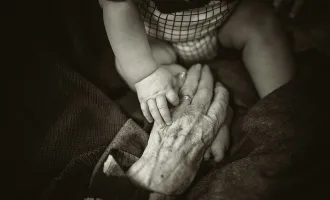6 Things Your Knees Will Thank You For
Knee pain is extremely common and annoying! Approximately 25 percent of adults have knee pain, and even scarier, the rate of knee replacements in the U.S. has surged to 87 per 10,000 adults older than age 65.
It may not seem like many of us at UCSF are in that age range and anticipating a knee replacement anytime soon. However, if you...
- Sit for long periods of time - often the case for students!
- Run frequently
- Bike
- Do lots of squats
- Walk up and down lots of hills - everyone should answer yes to this!
...then you may find yourself in the unpleasant situation of having knee pain.
Knee pain basically results from an imbalance between a high demand on the knee and a decreased ability of the body to meet this demand.
Why can’t the body meet the demand (aka What’s wrong with my knees)?
Without getting too technical, there are several reasons:
- Muscular imbalances, particularly decreased medial quadriceps strength and tight quadriceps, hamstrings, calves and iliotibial band
- A kneecap that moves too much
- Fallen arches
- Knees that point inwards (also known as genu valgum or Q-angle)
- Poor gluteal strength (a weak butt)
- One leg that is longer than the other
- Impaired functional strength (in other words, poor knee control during running, squatting and jumping)
Medical jargon
Some of the terms that medical professionals use to classify knee pain range from patellofemoral pain syndrome (pretty benign and broad), to chondromalacia patella, to the more permanent diagnosis of knee osteoarthritis. Knee pain can be muscular in nature, which may be termed quadriceps or patellar tendinopathy or IT band syndrome, or can result from trauma to one of the internal support structures, such as the menisci or ligaments. There can be a lot of causes of knee pain!
What’s the good news?
Even if you can’t change your alignment or a structural deformity, you can change muscular imbalances and improve function. Rehab for anterior knee pain in athletes with chondromalacia patella, for example, has a success rate of 82 percent. Yes!
The following suggestions are not meant to help you differentially diagnose your knee pain. Rather, if you have knee pain, there are a few general things that you can do that will probably make you feel a little better. So keep reading.
Strengthen your butt (and abdominals)
Weak gluteals allow the leg to rotate inwards during movement, which places increased stress on the patella. Strong gluteals and abdominals also support the pelvis and upper body, resulting in less loading on the knees. Do lots of clamshells, donkey kicks, monster walks and planks.
Fix your squat
Often a faulty squat is the culprit for knee pain during squats and activities with repeated knee flexion. Stand on one leg in front of a mirror, and take a good look at how you’re doing your squat. You want to maintain a neutral spine, stable trunk (no leaning!) and level pelvis throughout the movement. In addition, you want your knee tracking straight ahead and between your first and second toes (absolutely no movement side to side!) and minimal movement of your ankle. Also note the depth of your squat—only bend your knee as much as you can while maintaining ideal form without pain.
Stretch it out
Stretch your quadriceps, hamstrings and calves. Go to town on the foam rolling and massages for these contributing muscles!
Make a few daily changes
Sitting for long periods of time allows the knee to stiffen and also places continuous stress at the patellofemoral joint. Three easy fixes: try not to sit for more than thirty minutes at a time, bend and straighten your knee a few times every 10 minutes and increase the height of your seat (so your knee is in less flexion).
Take a good look at your activities
In addition to your squat form, turn a critical eye to contributing activities. Many cyclists, for example, ride with their seats too low—your knees should be nearly extended at the end of a stroke. Watch your jump landing—you should be able to stick landings without any sway or wobble. Are you running downhill a lot? This too places increased stress on the knees. Finally, did you ramp up training too steeply?
Consider orthotics
If you have a leg length discrepancy or fallen arches, think about placing an orthotic in the shoe of the shorter leg or foot that needs more support.
Add some quadriceps strengthening
The quadriceps are kind of the holy grail for knee pain, so make yours really strong with straight leg raises (lie on your back, straighten your knee and lift your leg up towards the ceiling), single leg and double leg squats and steps ups (stepping up on a stair). Just make sure all of these are pain free.
Final note: This article is not meant to be a substitute for medical intervention. If you need some professional help, by all means get some!


